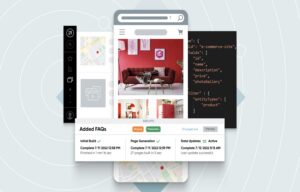From Idea to Launch: A Beginner’s Guide to Building Your First Product
4 min read
Why We Care and What You’ll Learn
We are product people who favor clear steps over vague promises. We have built, broken, and rebuilt ideas, so we share what truly helps. To save you time, we show concise actions you can use today. In this guide, we explain research, quick builds, and testing in plain terms. You will see checklists, small tests, and ways to learn fast. Here, I show one honest path on how to create a product without unnecessary drama. We avoid lengthy theory and focus on what drives results. Follow these steps to reduce risk, find real users, and ship something small. This intro sets the tone: practical, honest, and repeatable. Ready to start? Let us walk you through each simple step. We will point out mistakes to avoid and quick wins to chase—no fluff, just what works. Follow along and you’ll build something real, learn fast, and save time and money. Today.
What You Need to Know
First, validate that someone needs what you plan to build. Talk to real people and listen. Ask simple questions that reveal daily routines and real frustrations. Watch how people solve the problem now, and note the workarounds they accept. That tells you what matters and what can wait. Look for repeated phrases or standard tools they mention. Those clues guide which features actually help. Then, decide the single job your product will do first. Keep the scope small and clear. A tight scope lowers cost and focus. Focus on one clear benefit and measure whether users understand and get it. Use simple tests, such as prototypes, landing pages, or ads, to gauge demand. Measure clicks, signups, or time on task. Small signal beats wild guesses. When signals appear, plan the next slight build. If signals remain weak, rethink the angle.
- Talk to at least five potential users and record answers.
- Capture exact words they use to describe the issue.
- Note any tools or steps they already use to cope.
After you gather this insight, sketch the most miniature version that delivers value. This becomes your minimum viable product. Focus on one clear benefit and measure whether users understand and get it. Use simple tests, such as prototypes, landing pages, or ads, to gauge demand. Measure clicks, signups, or time on task. Small signal beats wild guesses. When signals appear, plan the next slight build. If signals remain weak, rethink the angle.
How To Get Started
Set a one-week sprint with a single goal. Choose a clear user need and build one simple testable version. Use sketches or a basic clickable prototype. Make a tiny working version. Please share it with a few people and observe how they use it. Ask open questions and listen more than you talk—record where they hesitate, what they like, and what they ignore. Use short feedback loops and adjust quickly. If something is confusing, simplify it. If a part delights users, consider how to expand that part next. Keep notes organized and short. Turn feedback into one clear task list each week. Prioritize fixes that increase user success or reduce confusion. Small wins add up quickly.
- Define one clear metric to track progress each week.
- Select two quick channels to recruit testers.
- Plan one demo session with live observation.
Repeat this cycle. Each loop teaches you something real. That way, you shape a product that fits actual needs. Keep notes organized and short. Turn feedback into one clear task list each week. Prioritize fixes that increase user success or reduce confusion. Small wins add up quickly.
Why This Approach Works
This approach cuts risk and keeps budgets small. You learn early what users truly want, not what you guess they want. Quick tests reveal honest reactions, not polite feedback. Small builds let you change direction without significant losses. Over time, small validated changes create a product that fits a market. The pace is steady and human. It favors curiosity and listening over assumptions. That leads to better decisions and fewer wasted features. Simple experiments save time and money while revealing what users actually value.
Conclusion And Next Steps
We prefer steady progress over flashy promises. Start with one user need and run a tight week sprint to test it. Track what you learn and adjust your plan. Share your findings with the team and identify the next smallest step. We will be glad to help refine your ideas and plan follow-up sprints. Take one small action today: sketch a tiny solution and show it to a real person. That single step starts real momentum. Ready? Let’s get to work. Make small bets and learn fast. Come back with results and we’ll help plan next steps. Start now.





